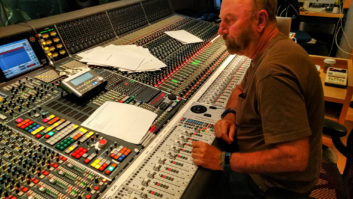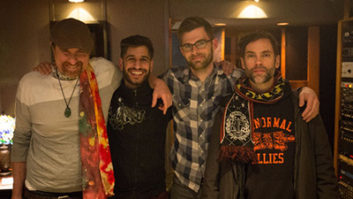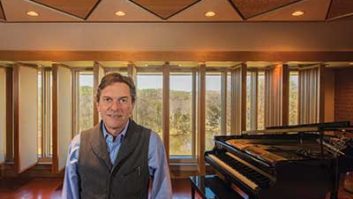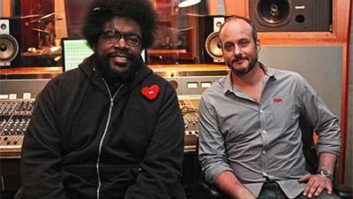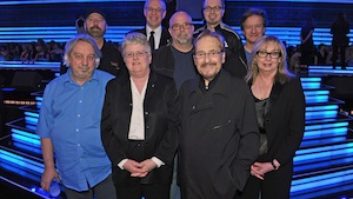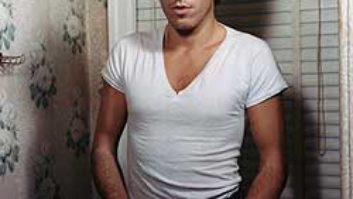Engineer Toby Scott has an extraordinary memory. He can tell you the date that he did his first live recording of a Bruce Springsteen show-November 5, 1980. He can also recall minute details about most of the hundreds of sessions he’s done. But even Scott is unsure of how many Springsteen concerts he’s recorded in the past 20 years. When we dropped in on him backstage at Los Angeles’ Staples Center, where he was setting up to record that night’s Springsteen gig, he estimated that it’s more than 100. He did promise, however, to check his supremely organized database and let us know for sure.
At Staples, Scott was set up in a spare dressing room/office with the system that he’s been using since 1995. Designed by Scott and tech guru Gary Meyerberg, the system was multipurpose from the get-go: At the time it was put together, Springsteen was bicoastal and the rig was intended for use at his home studios in both Los Angeles and New Jersey, as well as on the road.
Main components are a 96-in Euphonix CS2000 console and two Sony 3348 recorders. The system also encompasses a rack of 2-track equipment: two Sony 7000 series timecode DAT machines, two 2800 non-timecode DATs, and two HHB CD recorders. Another rack contains miscellaneous reverbs, including SPX 90s and 90 IIs, a REV7, two Eventide H3000s, AMS DMX and RMX units, and an Ursa Major Space Station. Also part of the package are extensive SMPTE and video sync generation and distributing systems.
Remote trucks were used for Scott’s first 1980 recordings and during the tours supporting The River and Born in the USA. In 1987, while recording the album Tunnel of Love, Scott decided to make a pitch for a combination system.
“Bruce’s home studio system had grown from the original Tascam cassette desk into 24-track digital,” Scott recalls. “When we finished the record and there was the prospect of touring, I did some research and found that for not too much money, I could buy a console and a second tape machine and put together a traveling system. That first really portable system, a 24-track tape machine, an Amek console and all the cases, more than paid for itself.” The Amek system sufficed until the end of the Human Touch/Lucky Town tour when Scott found himself renting sidecars to accommodate horn sections and background vocals.
“I’d been looking at a Euphonix for a long time,” he says. “Then, in ’94 Bruce was in the process of mixing with Bob Clearmountain. Bruce had been talking about computer automation for a while, and Bob’s studio setup clinched it. Bruce said, ‘I think it’s time we get some computer automation,’ and I bought the Euphonix within three days.”
An alternate patchbay was added because Scott needed more patch points than the Euphonix provided. He also preferred a traditional, vertical-style bay rather than the Euphonix top-to-bottom, inline modulars which were formatted in groups of four.
“There’s always some sort of video going down,” he notes, “so we have patch points for word sync, video sync, SMPTE, AES digital audio…
There’s never a case of, ‘I’ve got to dig into the back of this rack and then run another cable.'”
These days, on the E Street Band’s long reunion tour, Scott takes a split from the FOH mixer’s mic setup, which encompasses about 66 microphones, and monitors on Yamaha NS-10Ms. Monitoring, of course, is one of the biggest challenges of recording live, and Scott recalls one of his worst listening experiences: “‘Bad’ is when we did an outdoor show in Germany at an abandoned airport. The speaker system was A4s, 4 by 4 by 2, and each weighed about 400 pounds. They had those suckers stacked five stories high and 50 feet wide-about the size of a small apartment building. I was 30 feet from them in the back of a truck whose door we couldn’t close. When the bass played on ‘Born in the USA,’ everything in the truck was shaking. I could see my speakers moving, but I really couldn’t hear them at all. Luckily, I learned a long time ago how to watch the meters and know what to expect.”
The 15-year-old, three-CD Live 1975-1985 is still the only live album released by Springsteen and the E Street Band. And, unfortunately for fans, even with so much great material on tape there are no plans for another one anytime soon. The Sony/Columbia tape vault, where the music is archived, is currently home to about 4,700 Springsteen reels, approximately 1,500 of which are live performances. Before Sony’s library was computerized, Scott had developed his own database for the tapes, which he now interfaces with the official Sony one.
“There’s not much that we can’t find,” he asserts. “I can call up the night before, and if need be, they put the tape in a car and get it to us that day.”
